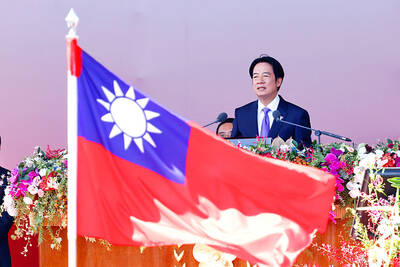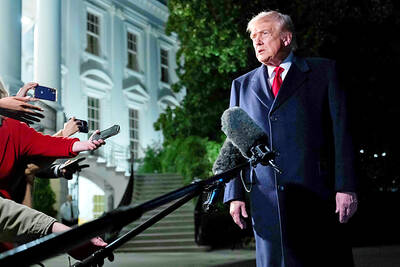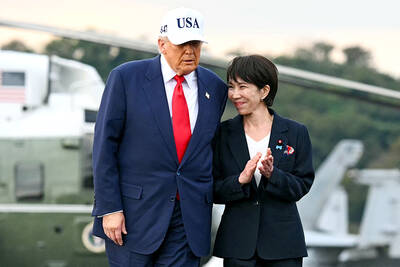Two journalists, one a kidnapping victim, the other held in detention by US forces, won their liberty on Monday.
Richard Butler, a British photographer working for CBS who was kidnapped two months ago, was freed when Iraqi soldiers burst into a house in central Basra and found him bound and with a bag over his head.
On Monday afternoon, US military officials announced that they would release Bilal Hussein, a photographer for the Associated Press who had been held for two years on allegations of aiding insurgents. Hussein will be released from US military custody today, the US military command in Baghdad said in a statement.
“After the action by the Iraqi judicial committees, we reviewed the circumstances of Hussein’s detention and determined that he no longer presents an imperative threat to security,” said US Major General Douglas Stone, the deputy commander for detainee operations.
Butler, 47, was thin but in good condition and laughing as he was shown on Iraqi state television hugging well-wishers and greeting beaming Iraqi officials.
“Thank you and I’m looking forward to seeing my family and my friends at CBS and thank you again,” said Butler, who was working as a producer for 60 Minutes when he was kidnapped.
“I’m pretty weak and I’ve lost quite a bit of weight,” he said later. “I’m looking forward to a decent meal.’
After the broadcast, Butler, who along with an Iraqi interpreter was kidnapped from the Sultan Palace Hotel in Basra, was taken to the British Consulate for medical examination, a spokesman there said. The interpreter was released Feb. 13.
Staff Lieutenant General Mohan al-Fraiji, of the Iraqi army’s operations center in Basra, said soldiers in the 14th Division had stumbled on Butler during a house raid for weapons in the city’s Jubayla area.
The man guarding Butler was arrested, he said, but security forces were still seeking three gunmen who fled the house before the soldiers entered.
But General Jalil Khalaf, chief of the Basra police, said the army had received a tip that the journalist was hidden in a house in the area, “and immediately a force from the army went to this area and found the journalist and released him.”
CBS issued a statement saying, “We are incredibly grateful that our colleague Richard Butler has been released and is safe.”
Hussein was detained April 12, 2006, after US Marines entered his house in Ramadi to establish a temporary observation post and allegedly found bomb-making materials, insurgent propaganda and a surveillance photograph of a US military installation.
The US military presented evidence against him to an Iraqi investigative judge last November.
AP executives, defending Hussein as a journalist doing his job, have argued that the US military detained Hussein because his photographs showed things they did not want the public to see.

People can preregister to receive their NT$10,000 (US$325) cash distributed from the central government on Nov. 5 after President William Lai (賴清德) yesterday signed the Special Budget for Strengthening Economic, Social and National Security Resilience, the Executive Yuan told a news conference last night. The special budget, passed by the Legislative Yuan on Friday last week with a cash handout budget of NT$236 billion, was officially submitted to the Executive Yuan and the Presidential Office yesterday afternoon. People can register through the official Web site at https://10000.gov.tw to have the funds deposited into their bank accounts, withdraw the funds at automated teller

PEACE AND STABILITY: Maintaining the cross-strait ‘status quo’ has long been the government’s position, the Ministry of Foreign Affairs said Taiwan is committed to maintaining the cross-strait “status quo” and seeks no escalation of tensions, the Ministry of Foreign Affairs (MOFA) said yesterday, rebutting a Time magazine opinion piece that described President William Lai (賴清德) as a “reckless leader.” The article, titled “The US Must Beware of Taiwan’s Reckless Leader,” was written by Lyle Goldstein, director of the Asia Program at the Washington-based Defense Priorities think tank. Goldstein wrote that Taiwan is “the world’s most dangerous flashpoint” amid ongoing conflicts in the Middle East and Russia’s invasion of Ukraine. He said that the situation in the Taiwan Strait has become less stable

REASSURANCE: The US said Taiwan’s interests would not be harmed during the talk and that it remains steadfast in its support for the nation, the foreign minister said US President Donald Trump on Friday said he would bring up Taiwan with Chinese President Xi Jinping (習近平) during a meeting on the sidelines of the APEC Summit in South Korea this week. “I will be talking about Taiwan [with Xi],” Trump told reporters before he departed for his trip to Asia, adding that he had “a lot of respect for Taiwan.” “We have a lot to talk about with President Xi, and he has a lot to talk about with us. I think we’ll have a good meeting,” Trump said. Taiwan has long been a contentious issue between the US and China.

Japanese Prime Minister Sanae Takaichi yesterday lavished US President Donald Trump with praise and vows of a “golden age” of ties on his visit to Tokyo, before inking a deal with Washington aimed at securing critical minerals. Takaichi — Japan’s first female prime minister — pulled out all the stops for Trump in her opening test on the international stage and even announced that she would nominate him for a Nobel Peace Prize, the White House said. Trump has become increasingly focused on the Nobel since his return to power in January and claims to have ended several conflicts around the world,